Today I’d like to talk about how to get an avoidant to commit to you in three specific steps.
Of course, one thing you’re going to see right off the bat is this isn’t going to be a quick process. Rather, it’s a nuanced process where you build trust with them to the level that they feel comfortable making a commitment decision.
So, what are the three steps of getting an avoidant to commit?
- Understand Their Avoidant Triggers
- Show, Don’t Tell Them That You Are Secure
- Building Secure Habits
You may read those three steps and think to yourself, “Wow, that’s so easy.”
But I assure you it’s anything but.
Let’s begin.

What Are Your Chances of Getting Your Ex Boyfriend Back?
Take the quizStep One: Understand Their Avoidant Triggers
Yesterday I wrote this article in my avoidant series that I feel best sums up what an avoidant attachment style actually is.
You have an avoidant attachment style if you have a very positive view of yourself and negative view of others. You tend to avoid conflict or intimacy in relationship for fear of losing yourself in them. In some cases, you may actually deny the fact that you’re doing this.
Now, I feel very confident in showing you what works to make avoidants commit because throughout the history of this website we’ve pretty much focused on that very topic.
In 2020 I conducted a poll in our private facebook support group asking the individuals there what type of attachment style our members thought their exes were,
In all 496 votes were cast.
Roughly 362 of these votes were attributed to “avoidant” and “fearful” exes. In case you were counting that’s 73% who think their ex has some avoidant tendencies.
In 2021 I ran the same exact poll to see if there was any difference.
This time a total of 371 votes were cast.
301 votes were attributed to “avoidant” and “fearful.” This means that once again our poll showed that most of our audience is attributing their exes to avoidant behaviors. Close to 82% this time.
Basically what I’m saying is that most of our experience is in dealing with breakups in which an avoidant is present. Specifically coming up with strategies that are effective at making an avoidant want to recommit and one of the first thing I think you need to grasp is our avoidant triggers concept and in order to understand that we need to talk about core wounds.
Understanding An Avoidants Core Wound
I can’t take credit for this, rather I’ll lay that at the feet of Coach Tyler.
We recently recorded a podcast episode together where we talked about fearful avoidants and he brought up the fact that it’s really important for you to grasp an avoidants core wound.
You see, every insecure attachment style has a core wound that makes them act the way they act.
For example, an anxious person is terrified of being abandoned and so any time that wound gets irritated they’ll react in a predictable way. That predictable way of course is that they exhibit anxious behaviors.
So, what is the avoidants core wound?

What Are Your Chances of Getting Your Ex Boyfriend Back?
Take the quizThey are terrified of losing their independence within the confines of the relationship.
If you understand that one concept about avoidants you’ll be golden because it’ll help explain why the triggers I’m about to list of actually trigger them.
Starting in 2020 we started really taking an interest in understanding avoidants and I stumbled across an interesting concept I like to call “avoidant triggers.” Not all avoidants are created equally. Especially when it comes to what sets them off. We noticed that some of our clients exes would be fine in a relationship but the second you started talking about moving in together their avoidant side triggers.
Here’s what we found are the biggest tipping points for avoidants.
- Getting asked out on a date
- Becoming “official”
- Talking about moving in together
- Actually moving in together
- Talking seriously about marriage
- Looking at rings together
- Getting engaged
- Getting married
- Having a child together
The one thing all of these have in common is that they all create a perceived loss of independence for the avoidant which in turn causes them to lose interest. What most people do, however, is that when they are on the receiving end of the avoiding they sense something is wrong and continue to push and “fix” what is wrong.
So, what is it that you can actually do if you find yourself tipping off one of the triggers?
Step Two: Show, Don’t Tell Them That You Are Secure
A while ago I interviewed Antia Boyd, who is a relationship coach like myself,
One of our favorite things to talk about is attachment theory and she told me this really interesting story about her and her husband. Antia, who admitted this herself, said that sometimes she has some avoidant tendencies while her husband has more secure tendencies.
When the two of them were dating and they were beginning to get serious she encountered her first avoidant trigger, “becoming official” and she began to withdraw. However, her now husband decided to simply give her the space she desired.
For the first time in her dating life here was a man who “got her.” She eventually came back and the rest is history.
Now, within that story is the key to helping you understand how to get an avoidant to commit to you.
It’s a concept I’ve lovingly referred to as “secure attachment gravity.” So, let’s zoom out and talk about this concept a bit more in depth. Really there are two types of attachment styles.
- Secure attachments
- Insecure attachments
Now, what’s really fascinating is that almost always insecure attachments are drawn to secure ones like gravity. So, here’s been my hypothesis for years.
Getting an avoidant to commit to you is simply a matter of you employing secure attachment behaviors when they employ avoidant attachment behaviors.
But how?
Well, I think I’m going to refer to one of the comments we got in our private facebook group for the answer.
Step #3: Start Building Secure Habits
A few days ago one of our amazing facebook members left this post,
“Atomic Habits is one of my favorite books and I like mentioning it in comments when I feel it could help you move forward on your journey. I read this book when the pandemic started and it has been changing my life in the most positive way since then.
This evening I was reading about the 4 horsemen on the Gottman page recommended by Anna (as part of my homework) when I came across the 2nd image.
I have managed to build some amazing good habits and quit the craziest one (excessive stalking) after finding my big WHY. In case of deeper level goals (conflict management) it’s even more important to phrase my why and the habit properly.

What Are Your Chances of Getting Your Ex Boyfriend Back?
Take the quizI knew what my problems were but I couldn’t phrase the solutions in ways that could actually help me change the bad habits. I will try to add these new ones to my habit tracker so that I can practice them daily with more intention until they come naturally on autopilot.
You can read more about the 4 horsemen + antidotes here:
https://www.gottman.com/…/the-four-horsemen…/
Both my ex and I were guilty of these. I still feel very ashamed of my behavior. I am glad I have found a solution for this too! I hope it will help you too.
Thank you for reading ERP family. 🙏❤️️”
What I love so much about this comment is that really what they’re talking about here is recognizing “anxious behaviors” and trying to come up with actionable solutions to shift them into secure ones and you do this not by trying to solve everything at once but by slowly creating healthy habits in how you react in relationships.
Since we deal with breakups so much I feel most at home using an example from a breakup.
Let’s imagine that you were the person in the relationship that had to control everything. You wanted a schedule of when you were going to go out on dates. You wanted a strict schedule of how often the two of you would text throughout the day.
Very “type A.”
Now, this behavior obviously grates on an avoidants nerves because if there’s one thing that triggers them it’s their core wound of losing their independence. So, they break up with you.
There’s a certain expectation or preconceived notion that they’re going to have about you when the two of you chat again.
Care to take a guess at what that preconceived notion is?
- They think you’re going to pester them.
- They think you’re going to try to win them back.
- They think you’re going to refuse to give them space.
This is why I think the mantra of,
“When they pull back, you pull back”
Is so effective. It creates this habit that flips that preconceived notion on their head and allows them to feel like you “get them.”
So, as weird as this is I literally think the best thing you can do to get an avoidant to commit to you is pull them towards you in this very nuanced approach through your own secure attachment.
A little like fishing. A few years ago I drew this ridiculous graphic describing how to reel in a fish,
Most people try to get an avoidant to commit to them by pulling too much but in the end what ends up happening is the metaphorical “line” snaps and you lose them. What securely attached people do is approach them in this way,
This very subtle push and pull mentality. And perhaps the greatest thing about this is they don’t even view it as “pushing and pulling.” All they think when an avoidant starts pushing away is,
“Oh, I guess they need space.”

What Are Your Chances of Getting Your Ex Boyfriend Back?
Take the quizAnd they are confident with themselves to actually give their partner that space.
That’s how you get an avoidant to commit.
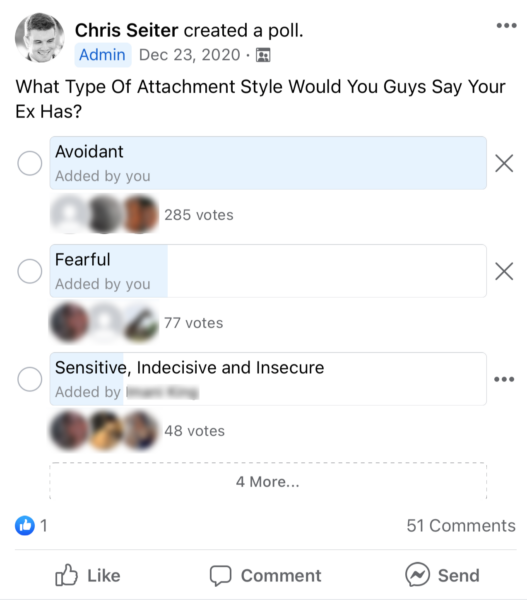
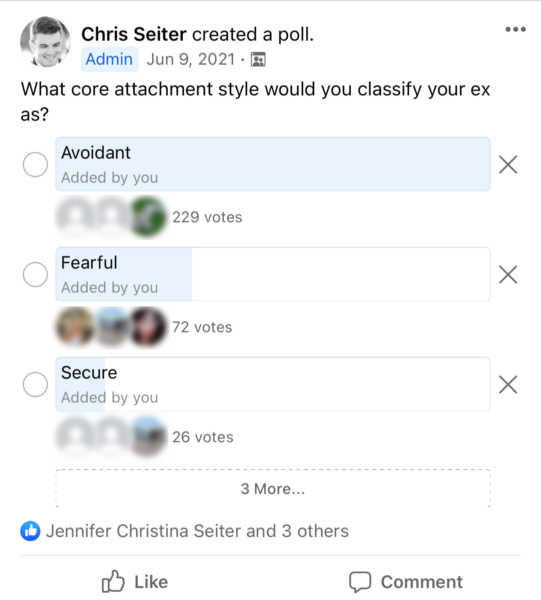
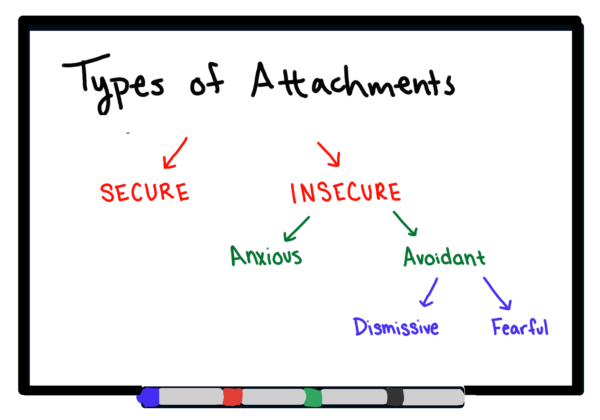
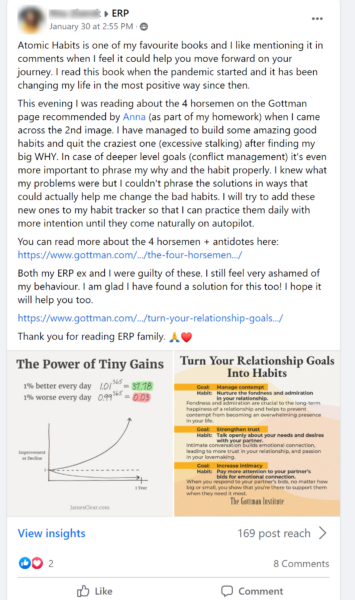
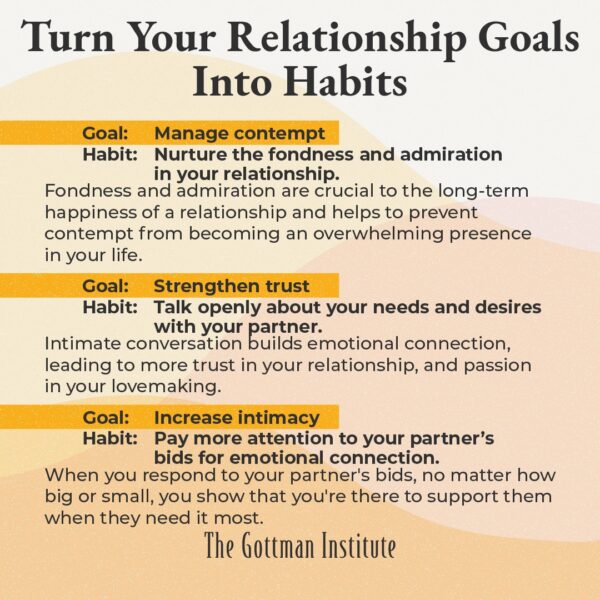
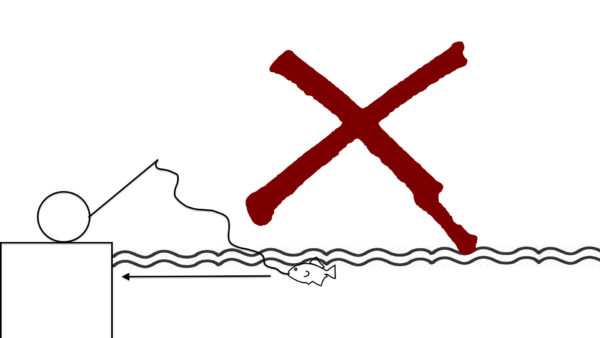
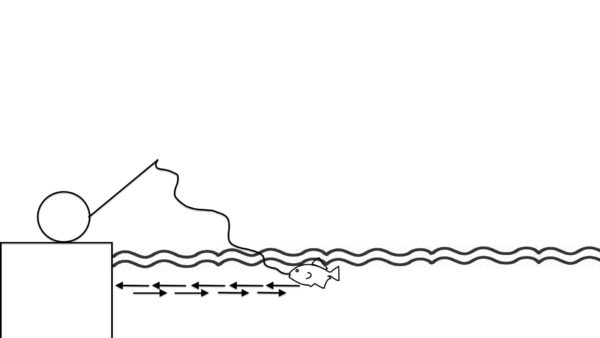
Jaz
February 2, 2022 at 5:39 am
I went through no contact and am now talking to my ex. Before no contact, I did behave needy. It’s almost a month of us, texting, talking on the phone and meeting up for lunch or dinner, nothing romantic but a little flirting. Not sure if I’m being impatient, but I’m a little worried that he may be friend zoning me. Lately he started calling me “bro”. Recently he called me bro again, and I responded by saying I know I friend zoned you, but I’m not a guy. He then replied with, I friend zoned you first. A few hours after our call, he sent me a video of his dog. I gave the video a heart. Then a couple of hours after his dog video, he sent me a video of himself at the gym. I was busy when I received, and wasn’t sure if I wanted to respond to it. I gave myself some time and decided to reply with a thumbs up. He immediately called me after I replied, and started teasing and kept using the word bro. I’m not sure how I should handle this situation.